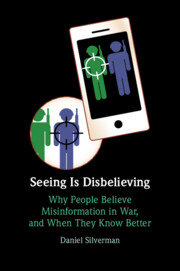Refine search
Actions for selected content:
28 results
The unpredictable role of language distance in bilingual cognition: A systematic review from brain to behavior
-
- Journal:
- Bilingualism: Language and Cognition , First View
- Published online by Cambridge University Press:
- 11 November 2025, pp. 1-14
-
- Article
-
- You have access
- Open access
- HTML
- Export citation
5 - Viewpoint
-
- Book:
- Language, Image, Gesture
- Published online:
- 08 January 2025
- Print publication:
- 13 February 2025, pp 105-140
-
- Chapter
- Export citation
4 - The Role of Proximity for States’ Obligations toward Persons Seeking Protection
- from Part I - Territoriality and Rights Protection
-
-
- Book:
- Lawless Zones, Rightless Subjects
- Published online:
- 02 January 2025
- Print publication:
- 09 January 2025, pp 75-89
-
- Chapter
-
- You have access
- Open access
- HTML
- Export citation
Exploring the Set-Theoretical Structure of Objects by Additive Trees
-
- Journal:
- Psychometrika / Volume 62 / Issue 1 / March 1997
- Published online by Cambridge University Press:
- 01 January 2025, pp. 119-131
-
- Article
- Export citation
Ordinal Network Representation: Representing Proximities by Graphs
-
- Journal:
- Psychometrika / Volume 54 / Issue 4 / December 1989
- Published online by Cambridge University Press:
- 01 January 2025, pp. 737-750
-
- Article
- Export citation
Additive Similarity Trees
-
- Journal:
- Psychometrika / Volume 42 / Issue 3 / September 1977
- Published online by Cambridge University Press:
- 01 January 2025, pp. 319-345
-
- Article
- Export citation
1 - Introduction
-
- Book:
- Seeing Is Disbelieving
- Published online:
- 31 August 2024
- Print publication:
- 21 November 2024, pp 1-17
-
- Chapter
- Export citation
2 - A Theory of People’s Factual Beliefs and Credulity in War
-
- Book:
- Seeing Is Disbelieving
- Published online:
- 31 August 2024
- Print publication:
- 21 November 2024, pp 18-52
-
- Chapter
- Export citation
4 - Proximity to the Fighting and the Puncturing of Factual Bias in Iraq
-
- Book:
- Seeing Is Disbelieving
- Published online:
- 31 August 2024
- Print publication:
- 21 November 2024, pp 84-104
-
- Chapter
- Export citation

Seeing Is Disbelieving
- Why People Believe Misinformation in War, and When They Know Better
-
- Published online:
- 31 August 2024
- Print publication:
- 21 November 2024
A proximity effect in adults’ contamination intuitions
-
- Journal:
- Judgment and Decision Making / Volume 6 / Issue 3 / April 2011
- Published online by Cambridge University Press:
- 01 January 2023, pp. 222-229
-
- Article
-
- You have access
- Open access
- HTML
- Export citation
17 - Performance and Performers at Court
-
-
- Book:
- The Roman Emperor and his Court c. 30 BC–c. AD 300
- Published online:
- 29 September 2022
- Print publication:
- 20 October 2022, pp 419-437
-
- Chapter
- Export citation
Chapter 4 - Factors Affecting the Intensity of Emotions
-
- Book:
- The Cognitive Structure of Emotions
- Published online:
- 04 August 2022
- Print publication:
- 18 August 2022, pp 71-99
-
- Chapter
- Export citation
Caregiver–child proximity as a dimension of early experience
-
- Journal:
- Development and Psychopathology / Volume 34 / Issue 2 / May 2022
- Published online by Cambridge University Press:
- 25 January 2022, pp. 647-665
-
- Article
-
- You have access
- Open access
- HTML
- Export citation
4 - The Price Theory of War in Action: Experimental Demonstrations of the Impacts of Expected Costs and Valuable War Aims
-
- Book:
- Costly Calculations
- Published online:
- 18 June 2021
- Print publication:
- 08 July 2021, pp 92-127
-
- Chapter
- Export citation
7 - Mapping the Influence of Issue Characteristics
-
- Book:
- Policy Controversies and Political Blame Games
- Published online:
- 30 October 2020
- Print publication:
- 12 November 2020, pp 145-175
-
- Chapter
-
- You have access
- Open access
- HTML
- Export citation
2 - Duty I – General Principles Governing Duty of Care
- from Part I - Negligence
-
- Book:
- Principles of Tort Law
- Published online:
- 03 October 2020
- Print publication:
- 22 October 2020, pp 35-121
-
- Chapter
- Export citation
8 - Networks Have a Spatial Dimension
- from Part III - Networks and Social Worlds
-
- Book:
- Living in Networks
- Published online:
- 27 October 2020
- Print publication:
- 22 October 2020, pp 193-209
-
- Chapter
- Export citation
Comparing the measurement of different social networks: Peer nominations, online communication, and proximity data
-
- Journal:
- Network Science / Volume 8 / Issue 1 / March 2020
- Published online by Cambridge University Press:
- 31 January 2020, pp. 62-78
-
- Article
-
- You have access
- Open access
- Export citation
Chapter 6 - Meaning-Shift Units in L2 Processing: Usage vs. Word Association Responses
-
- Book:
- Phraseology and the Advanced Language Learner
- Published online:
- 18 November 2019
- Print publication:
- 28 November 2019, pp 153-205
-
- Chapter
- Export citation
